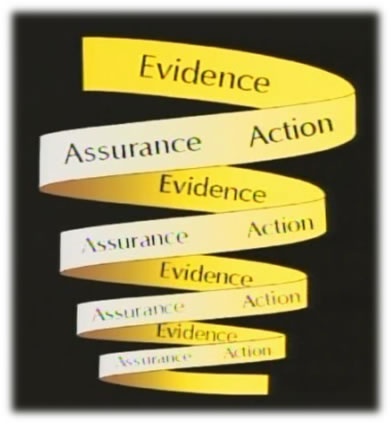Acts 12 begins with the execution of the apostle James, the brother of John (Acts 12:1-3) during Passover in Jerusalem in 44 A.D. Peter finds himself imprisoned at this time, at the hands of Herod Agrippa, the grandson of Herod the Great. I try to help the students envision what Peter must have been feeling at this time. Certainly this was a time when Peter could have lost hope!
When an angel comes to the prison to free him, Peter thinks he is having a vision (Acts 12:9). When Peter realizes that this is not a visionary experience, but an actual event in the mortal sphere and that he is freed, he makes the following comment:
“Now I know of a surety, that the Lord hath sent his angel, and hath delivered me out of the hand of Herod, and from all the expectation of the people of the Jews” (Acts 12:11).
An excellent cross reference that teaches this idea is 1 Nephi 5:8. In this verse we read how Sariah had doubts about her sons mission back to Jerusalem to secure the brass plates. Following their return, Sariah states:
Now I know of a surety that the Lord hath commanded my husband to flee into the wilderness; yea, and I also know of a surety that the Lord hath protected my sons, and delivered them out of the hands of Laban, and given them power whereby they could accomplish the thing which the Lord hath commanded them.
By doing the right thing, taking positive action, disciples of Christ are able to see evidence of their faith. This evidence in turn leads to assurance that we can act and not be acted upon, that we have the capacity to do good and exert a positive influence in this world. This action gives us hope, further strengthening our resolve, leading to more evidence of our faith. Peter’s prison experience is an example of this situation.
Elder Bednar stated:
Assurance, action, and evidence influence each other in an ongoing process. This helix is like a coil, and as it spirals upward it expands and widens. These three elements of faith—assurance, action, and evidence—are not separate and discrete; rather, they are interrelated and continuous and cycle upward. And the faith that fuels this ongoing process develops, evolves, and changes. As we again turn and face forward toward an uncertain future, assurance leads to action and produces evidence, which further increases assurance. Our confidence waxes stronger, line upon line, precept upon precept, here a little and there a little.
We find a powerful example of the interaction among assurance, action, and evidence as the children of Israel transported the ark of the covenant under the leadership of Joshua (see Joshua 3:7–17). Recall how the Israelites came to the river Jordan and were promised the waters would part, and they would be able to cross over on dry ground. Interestingly, the waters did not part as the children of Israel stood on the banks of the river waiting for something to happen; rather, the soles of their feet were wet before the water parted. The faith of the Israelites was manifested in the fact that they walked into the water before it parted. They walked into the river Jordan with a future-facing assurance of things hoped for. As the Israelites moved forward, the water parted, and as they crossed over on dry land, they looked back and beheld the evidence of things not seen. In this episode, faith as assurance led to action and produced the evidence of things not seen that were true.
True faith is focused in and on the Lord Jesus Christ and always leads to action. Faith as the principle of action is highlighted in many scriptures with which we are all familiar:
“For as the body without the spirit is dead, so faith without works is dead also” (James 2:26; emphasis added).
“But be ye doers of the word, and not hearers only” (James 1:22; emphasis added).
“Awake and arouse your faculties, even to an experiment upon my words, and exercise a particle of faith” (Alma 32:27; emphasis added).
And it is faith as the principle of action that is so central to the process of learning and applying spiritual truth. 1
The more we exercise our agency in righteous ways, the more we are able to see the evidence of our faith. This in turn, gives us assurance to face the challenges of tomorrow. This statement by Peter in Acts 12:11 is worth taking the time to analyze and discuss!
Notes
1. Elder David Bednar, Seek Learning by Faith, Ensign September 2007.


